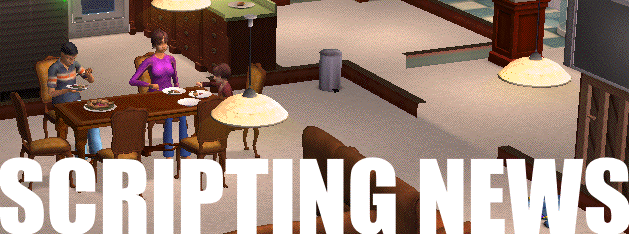
 Writing good bug reports
Writing good bug reports 
 The other day I wrote about the Zen of being a tester of a new piece of software. Be patient. It's a long journey. The bugs are there for a reason, it's best to assume they will always be there then you will be surprised and delighted in the unlikely event that one of them goes away.
The other day I wrote about the Zen of being a tester of a new piece of software. Be patient. It's a long journey. The bugs are there for a reason, it's best to assume they will always be there then you will be surprised and delighted in the unlikely event that one of them goes away.
Today we get a little bit more pragmatic.
You've been asked to test the software because the people who are writing it would like your help to make it better. They want to fix bugs, and the easier you make it for them, the more likely it is they will be able to. Sometimes people produce bug reports that are so insightful they lead the programmer right to the mistake in the code.
The basic information a bug report should contain is this:
1. What you were doing.
2. What you expected to happen.
3. What actually happened.
All three parts are very important. If you really did discover a bug, the programmer will need to know what you were doing so he or she can try to reproduce it. If they can't, it will be next to impossible to fix it.
The second part helps nail down the first part. Usually people know what they were expecting. Also, it's possible that what you were expecting isn't what the software does. An extreme example: "I was expecting that when I pressed the blue button at the bottom of the screen I would be granted three wishes."
For the third part a screen shot can help. It may contain information that's meaningful to the programmer that you wouldn't think to include in your report.
Another way to help the programmer is to say if the problem is or isn't reproducible. That is, if you try step #1 again, do you get the results in step #3? By trying to reproduce it you may add important information to the first part of the report.
PS: All bugs are reproducible, that's almost the definition of a bug.
PPS: Another howto re bug reports.
 Testing notes
Testing notes 
Doing some testing with Scripting2 this morning.
1. There have been some reports of duplicate posts. I think this happens when you, perhaps accidentally, click the Save button more than once the first time you're saving the post. The reason this is a problem is that there's invisible metadata stored on the "summit" of the post, the line that holds the title. One of the bits of data is the ID of the post. The first time you save there is no ID, that's the cue to the server to create a new post to store the text. If you click it twice, normally that's not a problem -- it just saves the post twice. But could be a problem the first time.
The simplest way to deal with this is to have the button wait until the save is complete. I've been doing it in a separate thread, mostly for esthetic reasons (if I remember correctly). I'll try not doing it in a thread.
My theory is wrong in every respect. I have a duplicate post myself and I surely didn't hit the Save button too rapidly. I have years of training, and in all that time this has never happened. So the obvious answer is there is a bug in the server side that creates duplicate posts. Or something like that.
2. How to insert a hyperlink. The right-click menu in the outliner offers a way to create a link node. See the OPML 2.0 spec for an idea what that is. That usually isn't what users want -- they want to hot-up a bit of text with an address. That's what the Add Link command in the HTML menu is for. First, put the URL on the clipboard. Then select the text you want to link from. Then choose Add Link from the HTML menu.
 Testing notes
Testing notes 
Doing some testing with Scripting2 this morning.
1. There have been some reports of duplicate posts. I think this happens when you, perhaps accidentally, click the Save button more than once the first time you're saving the post. The reason this is a problem is that there's invisible metadata stored on the "summit" of the post, the line that holds the title. One of the bits of data is the ID of the post. The first time you save there is no ID, that's the cue to the server to create a new post to store the text. If you click it twice, normally that's not a problem -- it just saves the post twice. But could be a problem the first time.
There are two approaches I could take. I'm going to do an experiment now to see which one I'll try.



